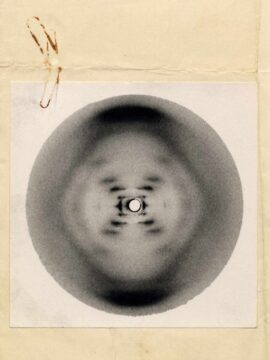Enjoying the content on 3QD? Help keep us going by donating now.
Category: Recommended Reading
Vermeer: A Life Lost and Found
Kathryn Murphy at Literary Review:
 From the sparse scatter of documents testifying to the life of Vermeer, many of them forbiddingly brief or boring or purely legal, Graham-Dixon constructs a compelling story. But it is a story – like those fictions which Vermeer’s paintings, with that mysterious charge of meaningfulness, have frequently inspired. Here, narrative drive is supplied by Vermeer’s supposed enmity with his mother-in-law, Maria Thins, a Catholic woman who, though she at first refused to condone her daughter’s marriage to a Protestant, thawed sufficiently to allow him and his family to live in her house. Facts which suggest Vermeer accommodated himself to the Catholic faith, an assumption which has informed much recent scholarship, are explained away as the triumphs of Maria. Two of the Vermeers’ many children were called Ignatius and Franciscus and another sent away to train for the priesthood – Graham-Dixon sees this as ‘a resounding victory’ for Maria’s ‘militant Catholicism’ over Vermeer’s Collegiant will. The accoutrements of a Catholic household chapel which appear in the inventory of his goods drawn up after his death were only acquired ‘through gritted teeth’. Early modern confessional hostilities are still being fought in the book’s prose: the Catholics ‘were all in it together’; Vermeer was ‘living in a nest of Jesuits’.
From the sparse scatter of documents testifying to the life of Vermeer, many of them forbiddingly brief or boring or purely legal, Graham-Dixon constructs a compelling story. But it is a story – like those fictions which Vermeer’s paintings, with that mysterious charge of meaningfulness, have frequently inspired. Here, narrative drive is supplied by Vermeer’s supposed enmity with his mother-in-law, Maria Thins, a Catholic woman who, though she at first refused to condone her daughter’s marriage to a Protestant, thawed sufficiently to allow him and his family to live in her house. Facts which suggest Vermeer accommodated himself to the Catholic faith, an assumption which has informed much recent scholarship, are explained away as the triumphs of Maria. Two of the Vermeers’ many children were called Ignatius and Franciscus and another sent away to train for the priesthood – Graham-Dixon sees this as ‘a resounding victory’ for Maria’s ‘militant Catholicism’ over Vermeer’s Collegiant will. The accoutrements of a Catholic household chapel which appear in the inventory of his goods drawn up after his death were only acquired ‘through gritted teeth’. Early modern confessional hostilities are still being fought in the book’s prose: the Catholics ‘were all in it together’; Vermeer was ‘living in a nest of Jesuits’.
more here.
Enjoying the content on 3QD? Help keep us going by donating now.
What Socialism Got Right
Kristen Ghodsee at The MIT Press Reader:
 Twenty years ago, in November of 2005, Duke University Press published my first book: “The Red Riviera: Gender, Tourism, and Postsocialism on the Black Sea.” Produced in the wake of socialism’s global collapse and the riot of Western triumphalism that ensued, I deployed both qualitative and quantitative methods to advance a simple, but unpopular, argument: For most people in the former Soviet bloc, capitalism sucked.
Twenty years ago, in November of 2005, Duke University Press published my first book: “The Red Riviera: Gender, Tourism, and Postsocialism on the Black Sea.” Produced in the wake of socialism’s global collapse and the riot of Western triumphalism that ensued, I deployed both qualitative and quantitative methods to advance a simple, but unpopular, argument: For most people in the former Soviet bloc, capitalism sucked.
By writing the “small histories” of men and women laboring in Bulgaria’s vibrant tourism industry in the decade following their country’s mad dash to embrace democracy and free markets, I explored how and why this small southeastern European country transformed from a relatively predictable, orderly, egalitarian society into a chaotic, lawless world of astonishing inequality and injustice. I wrapped my critiques of the rampant neoliberalism of the “Wild, Wild, East” in thickly descriptive accounts of the lives of chambermaids, bartenders, tour guides, cooks, waitresses, and receptionists. I wanted to show, not tell.
More here.
Enjoying the content on 3QD? Help keep us going by donating now.
How We’re Creating the Dumbest Generation in History
Enjoying the content on 3QD? Help keep us going by donating now.
The computers that run on human brain cells
David Adam in Nature:
 In a town on the shores of Lake Geneva sit clumps of living human brain cells for hire. These blobs, about the size of a grain of sand, can receive electrical signals and respond to them — much as computers do. Research teams from around the world can send the blobs tasks, in the hope that they will process the information and send a signal back.
In a town on the shores of Lake Geneva sit clumps of living human brain cells for hire. These blobs, about the size of a grain of sand, can receive electrical signals and respond to them — much as computers do. Research teams from around the world can send the blobs tasks, in the hope that they will process the information and send a signal back.
Welcome to the world of wetware, or biocomputers. In a handful of academic laboratories and companies, researchers are growing human neurons and trying to turn them into functional systems equivalent to biological transistors. These networks of neurons, they argue, could one day offer the power of a supercomputer without the outsized power consumption.
More here.
Enjoying the content on 3QD? Help keep us going by donating now.
Tuesday Poem
The Mountain and the River
In my country there is a mountain.
In my country there is a river.
Come with me.
Night climbs up to the mountain.
Hunger goes down to the river.
Come with me.
Who are those who suffer?
I do not know, but they are my people.
Come with me.
I do not know, but they call to me
and they say to me: “We suffer.”
Come with me.
And they say to me: “Your people,
your luckless people,
between the mountain and the river,
with hunger and grief,
they do not want to struggle alone,
they are waiting for you, friend.”
by Pablo Neruda
from The Captains Verses
New Directions Books, 1972
Original Spanish at “read more”
Monday, November 10, 2025
How I Learned to Stop Worrying and Love My Shitty Life
Erik Baker at The Drift:
 Turning to philosophy to learn how to live is nothing new, of course. But the explicitly inspirational and instructional valence of much that appears today under that heading, even from academic presses, is striking — as is the apparent consensus that the central task of philosophy is to guide seekers to a greater acceptance of imperfection and insignificance. Sometimes these books focus on a particular school of philosophy, giving readers an “-ism” — existentialism, Buddhism, Taoism, and above all Stoicism, now practically a genre unto itself — with which to identify. Others staple together eclectic smatterings of received ideas into less partisan surveys on how to cope with failure and disillusionment.
Turning to philosophy to learn how to live is nothing new, of course. But the explicitly inspirational and instructional valence of much that appears today under that heading, even from academic presses, is striking — as is the apparent consensus that the central task of philosophy is to guide seekers to a greater acceptance of imperfection and insignificance. Sometimes these books focus on a particular school of philosophy, giving readers an “-ism” — existentialism, Buddhism, Taoism, and above all Stoicism, now practically a genre unto itself — with which to identify. Others staple together eclectic smatterings of received ideas into less partisan surveys on how to cope with failure and disillusionment.
The self-help industry has in turn embraced this conception of “philosophy,” to the point where it’s no longer always clear whether to categorize a given book of advice as philosophy or self-help in the first place.
More here.
Enjoying the content on 3QD? Help keep us going by donating now.
A Pragmatic View of AI Personhood
Paper by Joel Z. Leibo, Alexander Sasha Vezhnevets, William A. Cunningham, and Stanley M. Bileschi at Arxiv:
 The emergence of agentic Artificial Intelligence (AI) is set to trigger a “Cambrian explosion” of new kinds of personhood. This paper proposes a pragmatic framework for navigating this diversification by treating personhood not as a metaphysical property to be discovered, but as a flexible bundle of obligations (rights and responsibilities) that societies confer upon entities for a variety of reasons, especially to solve concrete governance problems. We argue that this traditional bundle can be unbundled, creating bespoke solutions for different contexts. This will allow for the creation of practical tools — such as facilitating AI contracting by creating a target “individual” that can be sanctioned — without needing to resolve intractable debates about an AI’s consciousness or rationality. We explore how individuals fit in to social roles and discuss the use of decentralized digital identity technology, examining both “personhood as a problem”, where design choices can create “dark patterns” that exploit human social heuristics, and “personhood as a solution”, where conferring a bundle of obligations is necessary to ensure accountability or prevent conflict. By rejecting foundationalist quests for a single, essential definition of personhood, this paper offers a more pragmatic and flexible way to think about integrating AI agents into our society.
The emergence of agentic Artificial Intelligence (AI) is set to trigger a “Cambrian explosion” of new kinds of personhood. This paper proposes a pragmatic framework for navigating this diversification by treating personhood not as a metaphysical property to be discovered, but as a flexible bundle of obligations (rights and responsibilities) that societies confer upon entities for a variety of reasons, especially to solve concrete governance problems. We argue that this traditional bundle can be unbundled, creating bespoke solutions for different contexts. This will allow for the creation of practical tools — such as facilitating AI contracting by creating a target “individual” that can be sanctioned — without needing to resolve intractable debates about an AI’s consciousness or rationality. We explore how individuals fit in to social roles and discuss the use of decentralized digital identity technology, examining both “personhood as a problem”, where design choices can create “dark patterns” that exploit human social heuristics, and “personhood as a solution”, where conferring a bundle of obligations is necessary to ensure accountability or prevent conflict. By rejecting foundationalist quests for a single, essential definition of personhood, this paper offers a more pragmatic and flexible way to think about integrating AI agents into our society.
More here.
Enjoying the content on 3QD? Help keep us going by donating now.
James Watson died a couple of days ago, so here’s a rare interview with both Watson and Crick
Enjoying the content on 3QD? Help keep us going by donating now.
The Increasingly Complex Science of Political Identity
C. Brandon Ogbunu at Undark:
 Questions about voting patterns have long been the object of inquiry from thinkers across a breadth of fields, and especially in social science domains like political science, psychology, and economics. Studies in these realms are often reflective and retrospective, telling detailed stories of how, for example, the American electorate has changed over decades. These scholars ideally slow-cook these stories through meticulous analysis before they enter a peer review process that itself operates at a snail’s pace.
Questions about voting patterns have long been the object of inquiry from thinkers across a breadth of fields, and especially in social science domains like political science, psychology, and economics. Studies in these realms are often reflective and retrospective, telling detailed stories of how, for example, the American electorate has changed over decades. These scholars ideally slow-cook these stories through meticulous analysis before they enter a peer review process that itself operates at a snail’s pace.
But because coverage of elections is such a time-sensitive endeavor, we often rely on the quick trigger of political journalists to tell us the stories at the timescale that we need to grasp the world around us. To have enough information to cast a vote on election day, we may need to know how the race for mayor has changed on a given day and what those changes mean. The problem here, well known throughout journalism, is that the rush to report can sensationalize or oversimplify voting dynamics.
More here.
Enjoying the content on 3QD? Help keep us going by donating now.
The DNA Helix Changed How We Thought About Ourselves
Carl Zimmer in The New York Times:
 The discovery of the structure of DNA in the early 1950s is one of the most riveting dramas in the history of science, crammed with brilliant research, naked ambition, intense rivalry and outright deception. There were many players, including Rosalind Franklin, a wizard of X-ray crystallography, and Francis Crick, a physicist in search of the secret of life. Now, with the death of the American geneticist James Watson at 97 on Thursday, the last of those players is gone.
The discovery of the structure of DNA in the early 1950s is one of the most riveting dramas in the history of science, crammed with brilliant research, naked ambition, intense rivalry and outright deception. There were many players, including Rosalind Franklin, a wizard of X-ray crystallography, and Francis Crick, a physicist in search of the secret of life. Now, with the death of the American geneticist James Watson at 97 on Thursday, the last of those players is gone.
That wrenching drama ultimately changed how we conceived of life, and of ourselves. As the discovery of DNA recedes into history, it becomes difficult to even imagine how people thought about life before that breakthrough. In earlier centuries, natural philosophers would write about a mysterious “vital force” inside of cells that set life apart from inanimate matter. Physicians noticed hereditary afflictions carried down through the generations, but they had no idea of how that happened.
More here.
Enjoying the content on 3QD? Help keep us going by donating now.
Sunday, November 9, 2025
The world without hegemony
Manjeet S Pardesiis and Amitav Acharya in Aeon:
The liberal international order or Pax Americana, the world order built by the United States after the Second World War, is coming to an end. Not surprisingly, this has led to fears of disorder and chaos and, even worse, impending Chinese hegemony or Pax Sinica. Importantly, this mode of thinking that envisages the necessity of a dominant or hegemonic power underwriting global stability was developed by 20th-century US scholars of international relations, and is known as the hegemonic stability theory (HST).
In particular, hegemonic stability theory developed out of the work of the American economist Charles P Kindleberger. In his acclaimed book The World in Depression 1929-1939 (1973), Kindleberger argued that: ‘The world economic system was unstable unless some country stabilised it,’ and that, in 1929, ‘the British couldn’t and the United States wouldn’t.’ While Kindleberger was mainly concerned with economic order, his view was transformed by international relations scholars to associate hegemony with all sorts of things. In particular, a hegemonic power is generally expected to perform one or all of three main roles: first, as the dominant military power that ensures peace and stability; second, as the central economic actor within the global system; and third, as a cultural and ideational leader – either actively disseminating its political ideas across the system or serving as a model that others seek to emulate.
More here.
Enjoying the content on 3QD? Help keep us going by donating now.
A State-led Financial Empire
Johannes Petry in Phenomenal World:
Having long prioritized domestic stability over the pursuit of a global role for the Renminbi (RMB), Beijing has recently accelerated its construction of a parallel financial architecture. Without seeking to fully replace the dollar’s global dominance, it has nevertheless sought to reduce its exposure to US monetary power while embedding its trading partners in RMB-denominated circuits of trade and finance.
Whereas British and US financial dominance relied on open capital markets, private banking networks, and the global expansion of highly financialized instruments—from deep derivatives markets to speculative financial activity increasingly detached from the real economy—China’s strategy is state-led and more functional in orientation. RMB internationalization is more closely organized around trade settlement, investment channels, and funding for production and infrastructure. It deliberately avoids the full liberalization and speculative excesses that have inflated the size of the USD-based system far beyond underlying economic activity. Rather than building vast global capital markets, Beijing constructs controlled channels that facilitate cross-border RMB use while maintaining state oversight. This produces a qualitatively different financial empire: smaller in scale compared to the sprawling dollar system, but informed by trade relations, value chains, and political alliances, and structured around managed connectivity.
These infrastructures are not neutral technical fixes. Their design determines who can access liquidity, how transactions are routed, and under which rules financial activity takes place. By embedding itself as a central node in these networks, China is doing more than internationalizing its currency: it is quietly reshaping the architecture of global finance by enhancing Beijing’s financial autonomy, reducing its exposure to US sanctions and monetary policy spillovers, while binding economic partners in the Global South more tightly to Beijing.
More here.
Enjoying the content on 3QD? Help keep us going by donating now.
Boyhood
Yuri Slezkine in the new journal Equator:
I grew up in Moscow, in a succession of communal apartments. The first book I learnt by heart (according to my father, who kept track and took pictures) was Ram the Baby Elephant, published in 1959, when I turned three. When Ram was born, all the animals came to say hello. The bear played the double bass, the giraffe danced the Russian squat dance, the camel brought a huge pacifier, the hippo got stuck in the doorway, and the rhino claimed to have walked “all the way from the Ganges”.
New books introduced more characters: a cast of local heroes, led by the wolf, the fox and the hare, and a large selection of jungle dwellers, including Bagheera, Baloo, and, from a much thicker book, the lion, the bull and two jackals named Dimanaka and Karataka.
Soon, animals – foreign, domestic and stuffed (in 1969 Winnie-the-Pooh was reborn as a popular Soviet cartoon character, Vinni Pukh) – were joined by mostly human orphans, robbers, soldiers, princesses, emperors and stargazers. Things happened once upon a time, in faraway lands. Fools, shepherds and youngest sons usually won. Commercial transactions involved ducats, thalers, guineas, sovereigns, doubloons and, most memorably, rupees, which were related to rubles, but could buy magic carpets and dancing cobras.
The books of my adolescence came with specific realms, names and uniforms. At the centre lay the Russian noble estate, surrounded by an overgrown park with a lily-covered pond, populated by old generals, eternal students, French governors, German tutors and a girl with an open book. It existed in a mythic space, unnamed and unchanging, troubled but safely landlocked.
More here.
Enjoying the content on 3QD? Help keep us going by donating now.
London Mayor Sadiq Khan: Zohran Mamdani’s Win Is a Victory for Hope
Sadiq Khan in Time Magazine:
 A couple of weeks before his election victory, Zohran Mamdani stood in front of a mosque in the Bronx. There, he gave the most personal speech of his campaign—a speech which sounded like it had been months, perhaps years, in the making. Just days before, a New York radio host had suggested Zohran would be “cheering” if another 9/11 happened on his watch. It was the high-water mark of a rising tide of anti-Muslim hatred that Mamdani had faced since the moment he declared his candidacy last year.
A couple of weeks before his election victory, Zohran Mamdani stood in front of a mosque in the Bronx. There, he gave the most personal speech of his campaign—a speech which sounded like it had been months, perhaps years, in the making. Just days before, a New York radio host had suggested Zohran would be “cheering” if another 9/11 happened on his watch. It was the high-water mark of a rising tide of anti-Muslim hatred that Mamdani had faced since the moment he declared his candidacy last year.
More here.
The Essential Kate Atkinson
Sadie Stein in The New York Times:
 You know instantly when you’re in Kate Atkinson’s world. It’s dark, slightly Gothic, mordantly funny, keenly observed, highly textured and always full of surprises. Atkinson my not be easy to characterize — she’s a master of every genre she tries — but one thing’s for sure: You’ll be completely absorbed.
You know instantly when you’re in Kate Atkinson’s world. It’s dark, slightly Gothic, mordantly funny, keenly observed, highly textured and always full of surprises. Atkinson my not be easy to characterize — she’s a master of every genre she tries — but one thing’s for sure: You’ll be completely absorbed.
In her long, prolific career, the British author has written crime thrillers, trippy time-jumping fantasies that flirt with magical realism, uncanny short stories, literary fiction, gothic family sagas, metaphysical quests and straight period pieces. For fifteen books, she has kept readers guessing, entertained, baffled, thrilled and eager to return to her distinctive, slightly warped universe. You might not love all of them equally — they’re too different to please everyone — but you’ll never get tired of observing her inventive mind at work.
More here.
Enjoying the content on 3QD? Help keep us going by donating now.
Sunday Poem
Amá Teaches Me How to Whistle
She said, it’s facil, look up, kiss everything,
hold the sun between your mouth,blow like this * * * * * ****
**** * * * * **** ****after I told her I was a woman, she wrinkled
the space between us by hugging me.She told me, “you confused?”
I said, is the fire confused when it eats?& told her, I’m going by she & my real name,
the one I was born with, not given, she said,“you are not what it says on your driver’s license,”
amá, gracias for believing in this ordinary phenomenon,like the DNA that made grapes, it made them
a million times before, a million times after,I have one in my mouth, how round this knowledge,
the gush in my mouth: sweet, tart, & bitter, oh amá,I finally learned how to whistle like you:
by Moncho Alvarado
from Split This RockVocal rendering by author> here:
Enjoying the content on 3QD? Help keep us going by donating now.
Friday, November 7, 2025
Having lived in the United States for a few years, I have either struggled to understand democracy in practice or struggled to keep up with it
Wen Gao in The Common Reader:
 As a child, I imagined America as a truly democratic place where I could speak, disagree, and still listen. I even used to quote half seriously, “I disagree with what you say, but I will defend to the death your right to say it,” from an American movie I watched, when I argued with my little friends. That line felt like a promise. I thought that was what America looked like. Later, I realized that the promise was harder to keep. I remember when I saw Charlie Kirk being killed while debating, I felt lost, totally lost. What about freedom of speech?
As a child, I imagined America as a truly democratic place where I could speak, disagree, and still listen. I even used to quote half seriously, “I disagree with what you say, but I will defend to the death your right to say it,” from an American movie I watched, when I argued with my little friends. That line felt like a promise. I thought that was what America looked like. Later, I realized that the promise was harder to keep. I remember when I saw Charlie Kirk being killed while debating, I felt lost, totally lost. What about freedom of speech?
Having lived in the United States for a few years, I have either struggled to understand democracy in practice or struggled to keep up with it. People laugh at Trump jokes, and in many public spaces, it feels like a small ritual; you must say something about him, in public or personal conversation. I understand it, and I do not. Should I laugh too, and say, “Yes, that is awful,” or stay silent with something I do not truly understand?
Sometimes I sit there, smiling faintly, unsure if the laughter is about politics or about belonging.
More here.
Enjoying the content on 3QD? Help keep us going by donating now.
Notes from the near-future of AI
Eli Pariser at Second Thoughts:
 I attended The Curve, a conference of ~350 top AI lab leaders and scientists, safety activists and alarmists, political advisors and lobbyists, journalists, and civil society leaders. The event took place in Lighthaven, a quirky cluster of houses in Berkeley that have been retrofitted into small conference spaces. Many sessions were in living room-sized spaces, so it was all very personable and informal — an impressive feat by the organizing team.
I attended The Curve, a conference of ~350 top AI lab leaders and scientists, safety activists and alarmists, political advisors and lobbyists, journalists, and civil society leaders. The event took place in Lighthaven, a quirky cluster of houses in Berkeley that have been retrofitted into small conference spaces. Many sessions were in living room-sized spaces, so it was all very personable and informal — an impressive feat by the organizing team.
Many participants seemed thrilled, awed, and also deeply worried. Someone described it as “snorting pure San Francisco.” At 45 I was one of the older participants — the average age was mid-30s, but many of the most powerful people were in their late 20s. Pretty much every single person I talked to was smart, relatively humble, and pleasant. You couldn’t throw a rock without hitting someone with a large Substack following.
There was broad consensus that the pace of progress in AI models will continue to accelerate, though lots of debate about how quickly.
More here.
Enjoying the content on 3QD? Help keep us going by donating now.
Waymo engineer Vincent Vanhoucke on Self-driving cars
Enjoying the content on 3QD? Help keep us going by donating now.
